One of the most surprising things about American Ballet Theatre’s new Firebird is how Russian it isn’t. When Serge Diaghilev commissioned 27-year-old Igor Stravinsky to write his first ballet score, one of the impresario’s continuing aims was to acquaint Paris with Russian music and culture. L’Oiseau de Feu premiered in 1910 with a wandering Tsarevitch as its hero and a magic bird as its ballerina. All manner of colorful ogres guarded the maidens that the evil sorcerer Kaschei had captured.
Although ABT’s Firebird was choreographed by Alexei Ratmansky, with a set design by Simon Pastukh and costumes by Galina Solovyeva, it’s set in a dangerous neverland that could almost be Ivan’s bad dream. Occasionally, the performers indulge in a bit of folkish heel-and-toe amid their arresting leaps and turns, but Ratmansky has updated the scenario, making it seem more humorous, and also at times confusing.
This Ivan (Marcelo Gomes) is purportedly seeking his lost love. He awakens to find himself in an abstract green space with a doorway in it. Once through that door, he’s in an alarming environment, and crossing himself first was a futile precaution. Fire and smoke spout from giant, lumpy, silver-barked trees with the tops of their branches lopped off (at first glance, these red-tipped limbs resemble oddly bent lipsticks; a bit later you can view them as part of a toxic industrial landscape). A row of silver apples is laid out downstage, but Ivan has no time to eat one. There’s not just a single Firebird, but a flock—seven males and seven females, all dressed in fantastic red outfits aflutter with fabric scraps. Ratmansky creates clever patterns with his magic avians, even as he keeps them flying about.
Having so many firebirds, however, undermines the power of the titular one. When Natalia Osipova appears, she’s dressed exactly like the others, which makes sense in a way, but she’s clearly special— more extravagantly flexible, imperious, and limber-legged than they. Still, it seems purely accidental that she’s the one Ivan tries to capture and subdue; she’s just closer to stage right than her friends.
As with the more-or-less traditional Firebirds (Mikhail Fokine’s original as performed by the Royal Ballet, say, or George Balanchine’s 1949 version), it’s difficult to view the pas de deux for Ivan and the Firebird as his attempt to capture this marvelous creature and not as a love duet, since so many traditional partnering maneuvers are involved—even though Ratmansky incorporates wild flapping on his ballerina’s part and sudden limp collapses. Osipova manages desperation eloquently and with silky ease. But there’s something slightly amiss here. The duet goes on at the same pitch for so long that it begins to look like spousal abuse. Where is the proud bird with magic powers? And why doesn’t her flock rush in and peck Ivan to death? She doesn’t stop Ivan with the promise of help and the gift of a magic feather that will summon her when he’s in peril; he grabs a feather from her costume, and while he’s looking at it, she escapes without having explained its uses to him.
The enchanted maidens are not decorous girls tossing apples in a garden. In their fluffy green dresses and headgear, they’re as bashful and greedy and clumsy as a kindergarten class. They scurry about in their own version of a flock, chatter silently together, and treat Ivan as both a slightly scary interloper and a celebrity whose autograph they’d like to get. Does he want an apple? Twelve hands extend one to him. Simone Messmer, like the Firebird, wears nothing that distinguishes her from her playmates, but she’s a little more gauche than they are (Messmer is terrific in the role). Ivan apparently sees something in her that reminds him of his missing sweetheart (who she eventually turns out to be) and encourages her to show off some adept pointework and leap about with him. The whole scene is a comic delight, and Gomes plays the wary but entranced hero with beguiling naivete and splendid dancing.
But as soon as the pair kiss. . .thunder! Lightning! The sky turns red; the smoke increases. Wendall Harrington’s projections create a whole moving forest of truncated trees. Kaschei arrives. Down on your knees, girls! David Hallberg is dramatically evil in his long, green-trimmed black coat, his turban, and his green gloves. He struts with almost fastidious elegance, and the women pant after him, cower, or trot around in patterns ordained by him. He kisses Messmer, then wipes his lips. Mild disgust. He has tasted another’s kiss on the mouth of his favorite! He exudes one puff of smoke, and Ivan temporarily becomes a frog.
The women beat up the hero and, on Kaschei’s orders, lay him out. He manages to wave the feather. Harrington’s slides create, in vanishing perspective, flame-red allées of trees, and the Firebird appears. Here the ballet takes a strange turn. Ratmansky is aiming for something more than a battle in which good fights evil and prevails. For one thing, it’s not clear for quite a while that the Firebird has accomplished anything. Kaschei and Ivan together lift her and fly her around, and the two men, the Firebird, and the leading Maiden perform an intricate quartet to the music that’s usually heard when the Firebird bourrées soothingly around the fallen ogres, spreading peace. The shifting configurations of the principals are highly effective visually, but less so dramatically. They abstract the struggle and in doing so drain the characters of specific motivation. Ratmansky may be making a statement about the balance between good and evil, but it doesn’t quite come across.
Kaschei claims the Maiden with a kiss, and she gladly lies down with him then and there (a curious image). That’s when the Firebird finally locates the giant egg that contains Kaschei’s soul. In short order, Ivan dashes it to the ground, killing the sorcerer. The Firebird opens the nearest trees to reveal their intricately glowing hearts, and out pop young men, dressed exactly like Ivan, in white suits. For a few happy, comradely moments, it seems as if he hasn’t just been seeking his lost love, but his entire prep school class. He tenderly strips his sweetheart of her green dress and headpiece. And when the other maidens reenter, they look just like her—white-gowned and blonde-wigged.
While Stravinsky’s majestic processional finale plays, all lovers reunite, and twelve identical couples join Ivan and his bride for an exuberant unison display of joyful leaps and turns. If you know how that music usually finishes the ballet, Ratmansky’s ending is a bit of a shock.
Despite issues to do with narrative coherence and theatrical timing, this Firebird is handsome to look at and full of arresting images and clever conceits. And there’s that rich music (finely conducted by Charles Barker) that by itself can conjure up haunted gardens and capering monsters.
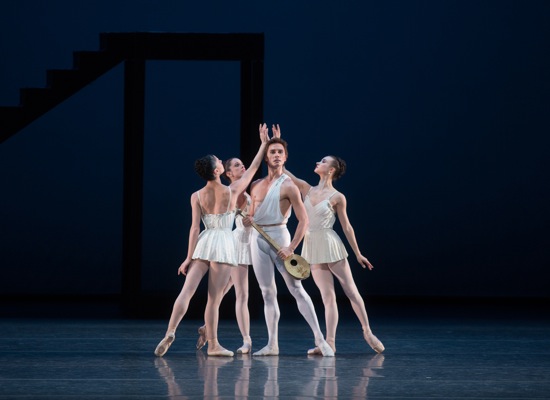
Apollo and his Muses. Maxim Beloserkovsky surrounded by (L. to R.) Palome Herrera, Maria Riccetto, and Christine Shevchenko. Photo: Rosalie O'Connor
I would like to have attended Firebird’s New York premiere, when Hallberg danced Balanchine’s Apollo and then morphed into Kaschei (coincidentally a role Balanchine played in Diaghilev’s Ballets Russes), and it’s always nice to have a superb ballet prince show his adroitness in portraying a villain. The Apollo at the performance I saw was Maxim Beloserkovsky. A dancer who doesn’t often get the attention he deserves, he received enthusiastic applause on June 13. Playing the adolescent god, he concentrated on conveying a sense of inborn nobility and sense of mission (that summons that he hears from above), as well as a certain boyish innocence and roguishness. Sometimes a bit tense, he nevertheless performed excellently and partnered his beautifully pliant Terpsichore, Palome Herrera, with tender care. His other muses were Christine Shevchenko (Polyhymnia) and Maria Riccetto (Calliope); Shevchenko, a member of the corps de ballet, has a lovely, generous quality. Stravinsky’s music, conducted by David LaMarche, sounded strangely underpowered at times.
I prefer this version of the superb ballet Balanchine choreographed for Les Ballets Russes in 1928 to the shortened one that New York City Ballet currently performs. Balanchine had his reasons for cutting the stylized birth pangs of Leto atop a tall platform, but in doing so he cut some of Stravinsky’s music and Apollo’s first fumbling steps. Also, without the stairway, the ballet ends with the starburst of arabesques by the three women, instead of the slow climb to Mt. Olympus, with the muses following their young leader into his divine heritage.
The program opened with Christopher Wheeldon’s wonderful 2011 Thirteen Diversions, set to Benjamin Britten’s “Diversions for Piano (left hand) and Orchestra,” Op. 21—a stunning work. I admire everything about the ballet. Brad Fields’ lighting is the scenery—a subtly changing array of colors on the backdrop, beginning with a lavender triangle that gradually expands. Bob Crowley imaginatively costumes eight corps couples in black, with the women’s full, knee-length skirts semi-transparent, and dresses four principal couples in gray, with a hint of red trim under the women’s skirts.
There’s quite a lot of running on and off the stage, yet the thirteen sections aren’t separated by heavy-duty punctuation. Somehow, the piece keeps flowing along, powered by changes of speed, mood, and personnel. Wheeldon is a master of counterpoint, and it always surprises me how he can pull a canonic passage into unison in unforeseen ways. His movement choices, too, can be surprising; within the classical vocabulary, he manages unusual sequences. The dancers do him proud in their various displays: Hee Seo in a romantic duet with Gray Davis, Kristi Boone and Thomas Forster in another, Craig Salstein and Daniel Mantei challenging each other and bringing in their partners, Sarah Lane and Devon Teuscher, for a quartet. And whenever needed, the black-clad women and/or men back them up, echo them, and swirl around them.
Wheeldon dedicated Thirteen Diversions to Georgina Parkinson (1938-2009), onetime Royal Ballet principal and a cherished ballet mistress at ABT. It’s quite a tribute.

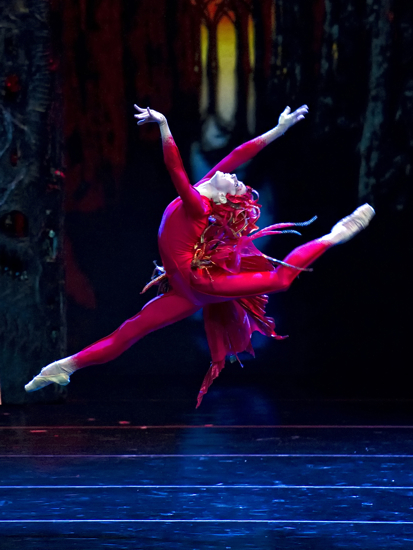
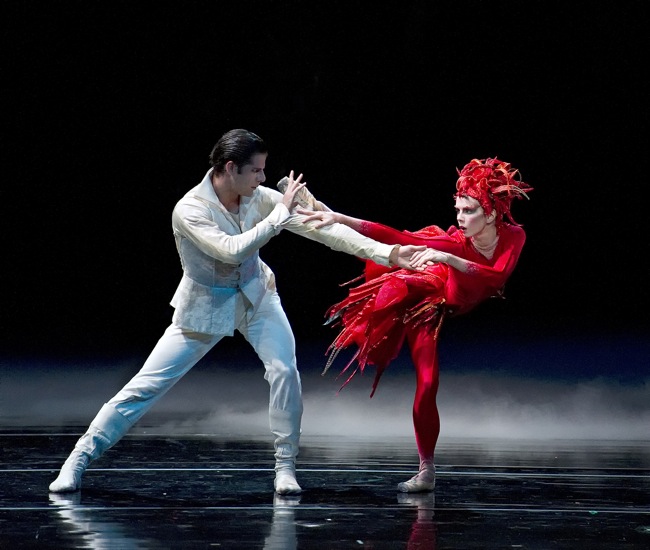
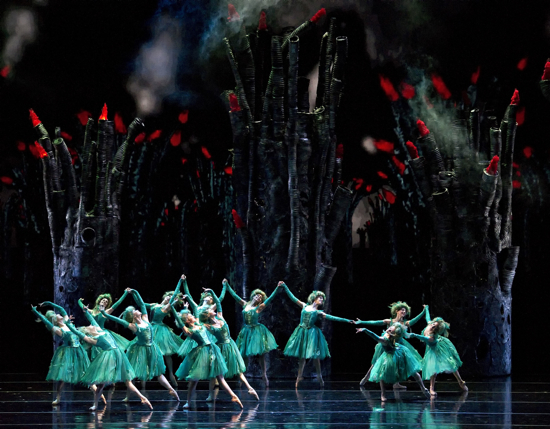
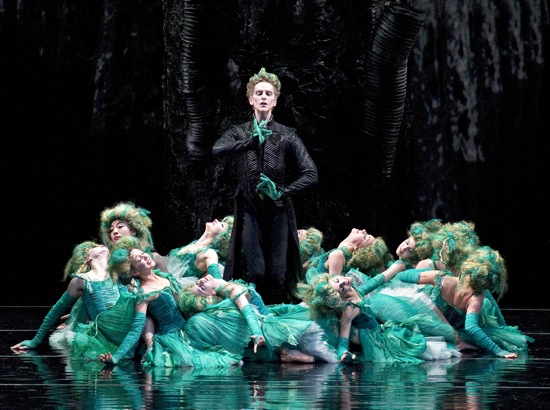
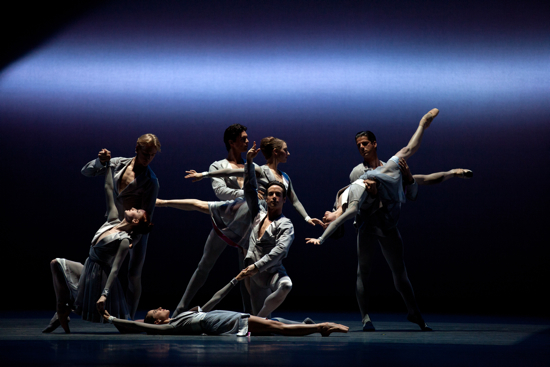
Deborah, your Firebird review made me laugh out loud, many thanks. And I’m glad ABT is doing the full Apollo; that’s the one that is done at Oregon Ballet Theatre and I vastly prefer it, not only because it’s the full score, but because those first baby steps Apollo takes it seems to me sets up the framework for what’s to come. The Wheeldon I do wish I could see.